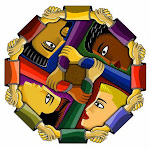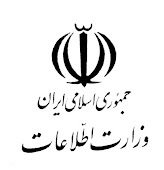Washington, Jan 14 (DPA) Espionage is called the second oldest profession in the world and it’s no less thrilling and wild as the world’s oldest profession, prostitution.For centuries, people have spied on each other, fascinated by the intrigue, deception and in modern times by the latest technical gadgetry used to uncover secrets. And naturally, after the end of the Cold War, stories of espionage and the objects used to spy during that historical era became an obvious subject for a museum.
Just such a facility opened in the summer of 2002 in Washington DC. Dedicated to highlighting the adventure and enigmatic past of the mysterious trade craft, the International Spy Museum attracts nearly one million visitors annually. It describes itself as the only public museum in the US solely dedicated to espionage and the only one in the world providing a global perspective on the profession.
Three cars - an Aston Martin, a compact car and a Trabant - provide symbolism in the museum, located about one kilometre from the White House and just a few minutes walk from the headquarters of the Federal Bureau of Investigation. The Aston Martin DB5 is the one James Bond drove in the movie “Goldfinger”, complete with rotating license plates and machine gun.
Mannequins inside the compact car represent the many ingenious ways people used to flee the communist countries of the East Bloc during the Cold War. And the Trabant, in its time a proud product of East German industry, sits in an extensive area called City of Spies featuring depictions of post-war Berlin through the fall of the Berlin Wall.
In the museum, only a few metres separate Hollywood’s version of espionage and tragedies that played out in real life.
“Our visitors should be educated but should not fall asleep in the process,” said Thomas Boghardt, a historian and writer from Hamburg who has worked at the museum for four years. “There is a fine line between entertainment and education, but the number of visitors we attract seems to confirm what we do.”
The museum can be described as very American in style. Visitors can touch and try out things and are constantly encouraged to participate. A large sign at the entrance challenges guests to look around for something suspicious.
Among the visible items are so-called “dead drops,” hiding places where agents could leave documents. There’s also a potted plant in the window and cigarettes on the table. Could these items signal that fresh information is about to be delivered?
A letter from Mata Hari, the World War I exotic dancer and courtesan who was executed in France for espionage, is displayed alongside a carrier pigeon with a camera, lipstick that doubles as a pistol and dead rats whose bodies were used to hide rolls of film.
Visitors also learn the advantages of glass desks as they offer nary a hiding place for a wiretap. And they learn how spies got rid of enemies by using poison-tipped umbrellas, cigarette boxes laced with explosives and briefcases with high voltage in the handle.
More recent events also are covered. Under a satellite image of the Chinese island of Hainan, a sign challenges visitors to find a reconnaissance plane and a Chinese hunter. The hunter can be quickly found with the available magnifying glass, but the aircraft, which caused an international incident when it made an emergency landing on the island in 2001, is harder to identify.
Even more difficult is finding Osama bin Laden’s terrorist training camps in satellite images of the Pakistani desert. But with a bit of help, they also can be found. Nearby, visitors put on headphones to distinguish submarine sonar signals from whale calls.
“I also was sceptical about this playful aspect of the museum,” said Boghardt, “But for the entrance fee, you’ve got to offer people something.” Admission is $18 for adults and $15 for children, a considerable sum especially compared with the free admission at the numerous Smithsonian museums in the US capital.
























No comments:
Post a Comment